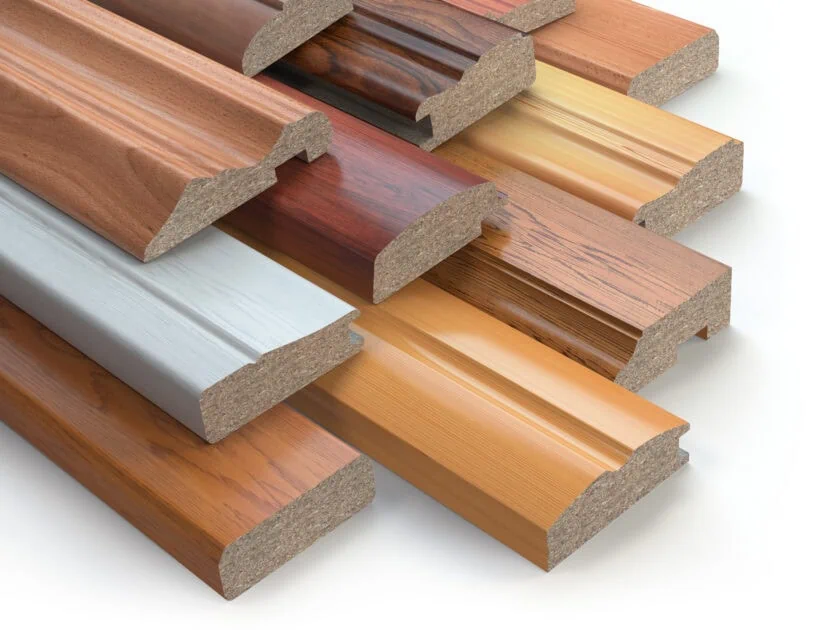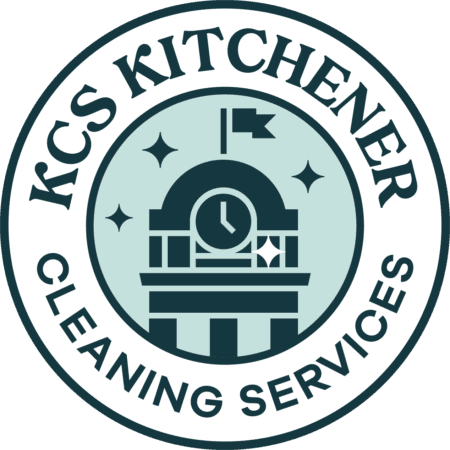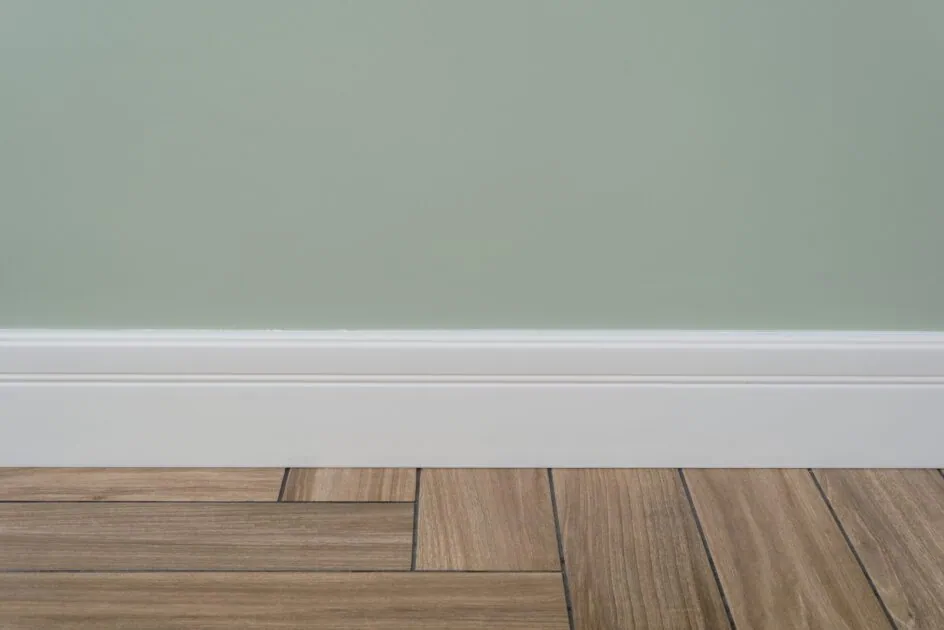You clean your baseboards. Three weeks later? They’re dirty again. You scrub harder. The buildup comes back faster. You buy stronger cleaners. The cycle never ends.
Here’s what nobody tells you: fighting symptoms instead of causes is a losing game. That dust magnet effect along your walls isn’t random. Your heating system creates it. Pets make it worse. Your home’s design amplifies everything.
Professional cleaners figured this out years ago. Prevention eliminates buildup before it bonds to surfaces. Simple concept. Huge time savings.
Stop thinking about removing buildup. Start preventing its formation instead. Stop fighting dust accumulation. Redirect airflow instead. Stop scrubbing pet hair weekly. Contain it at the source.
Prevention works 24/7 once you set it up. These strategies protect your investment while cutting maintenance time dramatically. Clean baseboards monthly instead of weekly. Use gentle methods instead of aggressive scrubbing.
Canadian homes face unique challenges: forced air heating, humidity swings, and extended indoor seasons. These factors accelerate buildup compared to milder climates.
Stop fighting the same battles repeatedly. Address root causes instead. Your baseboards stay cleaner longer with minimal effort. These prevention principles work throughout your home. The same approach to baseboard cleaning and maintenance applies to bathrooms, kitchens, and other high-traffic areas.
Product effectiveness varies significantly, and home environmental factors change frequently. Always verify current product specifications and pricing before making purchasing decisions.
What Actually Causes Baseboard Buildup in Your Home
Baseboards collect grime through predictable processes, yet most homeowners never consider this reality. Know these mechanisms and you’ll understand why standard cleaning advice fails.
Professional experience reveals that buildup patterns repeat across similar homes. This predictability gives you an advantage. Targeted prevention strategies interrupt formation cycles before cleaning becomes necessary.
How Heating Systems and Air Circulation Create Dust Magnets
Forced-air heating systems create thermal convection currents that drive dust particles toward walls. Warm air rises along wall surfaces, cools near the ceiling, then falls back down, carrying airborne particles with it. Baseboards sit directly in this circulation path.
Your HVAC system circulates large volumes of air throughout your home during heating periods. This creates a systematic distribution network for particles. Return air vents pull dusty air through ductwork. Filters don’t capture the microscopic particles that settle along wall edges during circulation.
Static electricity builds up on baseboards when relative humidity drops significantly. Synthetic carpet fibers generate substantial electrostatic charges that attract particles within several inches of the surface. This phenomenon explains why some baseboards collect debris faster than others despite similar cleaning frequencies.
Room corners and wall edges have much slower air velocities than central areas. These low-flow zones allow particles to settle due to reduced lift forces. Reduced circulation permits particles to settle rather than remain airborne, where filters could capture them.
Understanding your heating system’s airflow patterns helps you predict where buildup occurs fastest. This knowledge guides targeted prevention efforts rather than generic approaches that waste time on low-risk areas.
Why Pet Dander and Hair Accumulate Along Wall Edges
Pets gravitate toward walls for comfort and security. Dogs and cats frequently sleep against walls and rub along baseboards, shedding continuously in these preferred locations. This behavior concentrates pet-related debris exactly where air circulation already deposits household dust.
Pet dander particles carry static charges that attract them to surfaces. These microscopic skin flakes stick to painted surfaces and accumulate in baseboard grooves where normal air circulation can’t dislodge them.
Seasonal shedding cycles dramatically increase debris accumulation during spring and fall transitions. Indoor pets shed more during these periods due to changing daylight exposure.
Different pet types create different challenges. Long-haired breeds require different prevention strategies than short-haired animals. Multiple pets multiply accumulation rates beyond simple addition due to interactive behaviors.
Canadian Climate Factors That Speed Up Grime Formation
Extended heating operations from November through March in many Canadian homes create continuous air circulation, which accelerates dust accumulation rates by increasing particle mobility during low-humidity periods.
Winter humidity drops significantly in heated homes, which increases static electricity. Dry air enhances dust attraction to surfaces, making particles more likely to stick once contact occurs.
Road salt tracking introduces compounds that bond more aggressively to surfaces than regular household dust. These materials resist standard cleaning methods. Prevention approaches that block contact completely work better.
Well-insulated Canadian homes trap indoor air longer, allowing more particles to settle on surfaces rather than exhausting outdoors.
Regional climate variations affect homes differently. Consult local professionals for area-specific guidance.

Prevention Strategies for Different Baseboard Materials
Different baseboard materials require different prevention approaches. Dust adheres differently to various surface textures and finishes. Understanding your specific baseboard material guides prevention method selection for better results without surface damage. Prevention works hand-in-hand with understanding how often baseboards should be cleaned based on your home’s specific conditions and traffic patterns.
Match prevention strategies to material types for optimal protection while safeguarding your investment from damage caused by inappropriate treatment methods.
Painted Baseboard Protection Without Wrecking Finishes
Painted surfaces develop micro scratches from repeated cleaning, creating dust-trapping textures over time. Prevention products should protect without affecting paint adhesion or creating residue that attracts more debris.
Apply thin coats of silicone-based furniture polish designed for painted surfaces every few weeks during peak accumulation periods. These products create temporary barriers that allow easier dust removal without the scrubbing action that damages paint finishes.
Semi-gloss and satin paints with protective coatings handle prevention products better than flat finishes. Flat paint absorbs prevention products unevenly, potentially creating permanent shiny spots.
Test prevention products in hidden areas before full application. Some paint formulations react poorly to common household products, creating permanent discoloration or texture changes.
Wood and Vinyl Baseboard Prevention
Natural wood surfaces need breathing room. Some prevention products block moisture exchange, potentially causing moisture problems and finish deterioration. Choose prevention methods that protect without completely sealing the wood grain.
Oil-based products penetrate wood grain structures, providing dust-repelling properties through absorption rather than forming surface films. Apply these products sparingly to avoid oversaturation, which creates sticky surfaces that attract more debris.
Vinyl baseboards handle stronger prevention products than natural materials. Synthetic surfaces don’t absorb or react to chemical treatments. This durability allows for more aggressive prevention in challenging environments.
Static electricity builds more readily on synthetic surfaces. Choose prevention products with anti-static properties. Regular application of anti-static sprays reduces dust attraction more effectively than basic dust-repelling products alone.
Individual results vary significantly. Test all products in inconspicuous areas first.
Eco-Friendly Prevention Methods
Eco-friendly prevention strategies protect family health while providing effective dust control. These approaches align with growing environmental awareness and offer safer alternatives for homes with children and pets.
Plant-Based Solutions That Repel Grime
Fractionated coconut oil creates natural dust-repelling barriers through surface tension reduction and static charge neutralization. Apply thin layers monthly using microfiber cloths, avoiding residue buildup that attracts debris rather than repelling it.
White vinegar solutions mixed with equal parts distilled water reduce surface static charge and neutralize some dust particles. Allow complete drying before assessing effectiveness.
Essential oils like lavender and eucalyptus provide natural anti-static properties while offering aromatherapy benefits. Add several drops to vinegar solutions or oil applications for potentially enhanced effectiveness.
Plant-based products require more frequent application than synthetic alternatives but provide safer options for sensitive households.
Static-Reducing Methods Safe for Pets and Kids
Fabric softener sheets reduce static electricity when rubbed gently on baseboard surfaces. This method works particularly well during dry winter months when static problems peak in heated homes.
Maintaining indoor humidity between 40% and 50% during the heating season reduces static electricity generation while increasing particle mobility. Monitor humidity levels to avoid moisture problems.
Houseplants naturally increase humidity levels while improving air quality through filtration. Strategic placement near baseboards provides dual benefits: humidity control and air purification.
Always prioritize family and pet safety. Discontinue any method that causes adverse reactions.
Smart Home Design Changes That Reduce Buildup
Home design modifications address buildup causes at their source rather than managing symptoms after problems develop. These changes provide ongoing solutions that work continuously without ongoing maintenance effort.
Furniture Placement That Reduces Wall Contact
Position furniture several inches away from walls whenever possible to allow air circulation behind pieces. This creates pressure equalization zones that prevent particle stagnation and reduce accumulation rates significantly. Even small gaps make meaningful differences.
Use furniture pads on pieces that must sit against walls due to space constraints. These protective devices prevent direct contact while allowing easier cleaning access when maintenance becomes necessary.
Create visual markers for proper furniture positioning using small pieces of clear tape on the floor. These guides help maintain protective spacing after cleaning or rearranging rooms.
Air Flow Modifications to Reduce Dust Settlement
Continuous HVAC fan operation provides consistent air velocity, which maintains particle suspension longer, reducing settlement compared to intermittent operation cycles.
Ensure return air vents aren’t blocked by furniture or debris to maintain proper airflow. This keeps particles suspended for filter capture rather than allowing them to settle along walls.
Ceiling fan direction affects dust circulation patterns. Counter-clockwise rotation during cooling seasons and clockwise during heating seasons helps reduce particle settlement along walls.
Professional HVAC assessment identifies circulation problems that contribute to excessive dust accumulation. System modifications reduce buildup rates through improved air movement.
HVAC modifications should be performed by qualified professionals only.
Seasonal Prevention Systems for Ontario Climate
Ontario’s distinct seasonal changes present specific challenges for baseboard maintenance that generic prevention advice overlooks. Understanding regional climate patterns helps guide the timing of prevention strategies for greater effectiveness.
Winter Prevention When Heating Systems Work Overtime
Extended heating operation from November through March in many Ontario homes creates continuous air circulation that accelerates dust accumulation rates during low-humidity periods. Increase prevention product application frequency during these peak months.
Dry winter air exacerbates static electricity problems, causing particles to adhere to surfaces more aggressively. Monitor humidity levels and consider humidification to maintain comfortable levels while reducing static attraction.
Road salt tracking introduces compounds that bond more aggressively to surfaces than regular household dust. Use entrance mats and implement shoe removal policies to minimize contaminant introduction during winter months.
Spring and Fall Transition Strategies
Spring humidity increases reactivate prevention products applied during dry winter months. Monitor product performance and adjust application frequency as humidity levels change environmental conditions.
Fall preparation establishes strong prevention barriers before the heating season begins. Apply products to clean surfaces in October to prevent initial accumulation that becomes harder to control once heating systems resume operation.
Outdoor allergen introduction during high pollen seasons requires enhanced barrier protection to prevent accumulation of sticky organic particles that resist standard prevention methods.
Seasonal timing varies by specific location and weather patterns. Adjust strategies based on local conditions.
Cost-Effective Prevention Investment
Prevention strategies require upfront investment in products and time but provide significant long-term savings through reduced cleaning frequency and surface protection.
Time and Money Savings Through Smart Maintenance
Systematic prevention protocols require limited time each month compared to extensive weekly reactive cleaning. This results in substantial time reduction and labor cost savings based on individual time valuation.
Prevention products cost significantly less annually than reactive cleaning supplies for equivalent coverage areas. Consider long-term cost comparisons when evaluating prevention investments.
Professional deep cleaning services charge premium rates for comprehensive baseboard restoration that prevention strategies could have prevented. Compare annual prevention costs with single professional cleaning visits to understand the value proposition.
Pricing varies significantly by region and specific circumstances. Verify current local pricing and individual conditions before making cost decisions.
When Professional Services Provide Better Value
Some homes require professional assessment before prevention strategies can succeed. Underlying problems may overwhelm prevention product capabilities, requiring professional evaluation before investing time and money in potentially ineffective approaches.
KCS Kitchener Cleaning Services finds that clients who implement preventive strategies require less frequent professional services while maintaining superior appearance compared to reactive cleaning approaches.
HVAC system problems that contribute to excessive dust accumulation require professional diagnosis and correction before prevention strategies can work effectively.
Professional consultation is recommended for persistent problems or challenging conditions.
Building Your Prevention Maintenance Schedule
Effective prevention requires consistent application following established schedules rather than random application when problems become noticeable. Systematic approaches provide better results with less total time investment.
Monthly Tasks That Save Hours Later
Light prevention product application during monthly cleaning maintains barriers without buildup of excess product that attracts debris. Apply thin, even coats using appropriate tools for your specific baseboard materials.
Furniture positioning verification ensures protective spacing remains intact after room use and cleaning activities. Quick visual checks maintain spacing without requiring detailed measurement.
Air filter inspection and replacement maintain HVAC system efficiency that supports dust control through proper circulation. Monthly filter attention prevents system problems that increase dust accumulation rates.
Quarterly and Annual Maintenance
Thorough baseboard cleaning followed by complete prevention product reapplication provides seasonal reset for protection systems. This intensive maintenance replaces daily prevention attention with periodic focused effort.
Seasonal product evaluation assesses effectiveness and guides adjustments for changing environmental conditions. Different seasons require different products or application frequencies for optimal results.
Professional evaluation identifies developing problems before they overwhelm prevention strategies. KCS Kitchener Cleaning Services helps homeowners establish effective prevention strategies through professional consultation and maintenance support, improving protection while reducing long-term cleaning requirements.
Professional services vary in scope and cost. Verify current offerings and pricing in your area.
Taking Action on Your Prevention Plan Today
Stop fighting endless cleaning battles when prevention eliminates the problem entirely. You now understand why buildup forms. Heating system airflow, pet behavior, and Canadian climate factors all work against you. Different baseboard materials need different prevention approaches, and smart furniture placement combined with seasonal maintenance transforms prevention into an automated system.
When underlying problems overwhelm DIY prevention efforts, professional assessment saves time and frustration. KCS Kitchener Cleaning Services helps homeowners establish effective prevention strategies, turning reactive cleaning cycles into proactive protection systems.
Ready to stop the weekend scrubbing cycle for good? Contact KCS Kitchener Cleaning Services today and discover how professional prevention strategies keep your baseboards cleaner with less effort.


